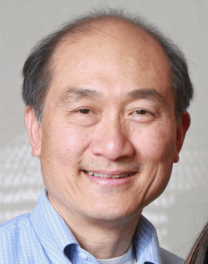David Koo's Home Page 
UCO/Lick Observatory
University of California, Santa Cruz
1156 High Street
Santa Cruz, CA 95064
koo@ucolick.org
Latest Modification: TARGET - 2017 May 1

 Background (Under Construction):
Background (Under Construction):
I was faculty (Astronomer and Professor) at the University of
California, Santa Cruz from 1988 until summer 2014 when I retired.
 Research (Under Construction):
Research (Under Construction):
I continue to enjoy research in astrophysics with my
long-term colleague and collaborator, Sandy Faber, at UC Santa
Cruz. DEEP has been
my major umbrella research program involving
Keck spectral observations of faint galaxies. This program is in its
3rd decade. DEEP started in the mid-1990's with the inception of
the Keck I telescope with several pilot redshift surveys, known as
DEEP1, totaling
over 1000 galaxies to I ~ 24 with exposures ranging up to several
hours.
The follow-up and main phase of DEEP , called DEEP2, was started in 2002 and finished by 2008. DEEP2 used over 90 Keck nights
with a powerful instrument built by Sandy (DEIMOS) to secure spectra of 1 hour exposures of over 50,000 galaxies to R ~ 24.1 at redshifts z ~ 1. Such a
large sample is needed to probe the large scale structure of galaxies and
unravel the details and physical mechanisms involved in galaxy formation
and evolution. In one of the 4 regions of the DEEP2 survey,
known as the Extended Groth Strip (EGS), a consortium of teams known
as AEGIS,
has
added a suite of deep to very deep panchromatic data ranging from the
X-rays
to radio. These data allow powerful probes of distant Active Galactic
Nuclei
(AGN) with supermassive black holes, as well as luminous, dusty
starburst
galaxies. In this EGS region, another 5,000 galaxies were observed with
DEIMOS as part of DEEP3
and completed in 2011. DEEP3 differed from DEEP2 by extending to the
blue but reducing the spectral resolution. The sample was also more
focused on special targets such as AGNs and pushed beyond R ~ 24.
Our multi-wavelength research as part of AEGIS has expanded over
the years and now include 4 of the other best observed fields for
faint multi-wavelength
extragalactic research: GOODS-North and GOODS-South, an UltraVISTA portion of COSMOS, and the central part of the UKIDSS Ultra-Deep Survey (UDS)
fields. Several surveys have solidified these 5 as among the very best legacy fields for the
foreseeable future: two led by G. Fazio (CfA) gathered over 2100 hours
of Spitzer IRAC data (SEDS; S-CANDELS);
some were deep HST WFC3 grism surveys led by Weiner for GOODS-North van
Dokkum (Yale) for the other 4 fields; several have been the deepest
Chandra X-ray maps, led by K. Nandra (MPI) for AEGIS-X and G. Hasinger (IoA-Hawaii) for X-UDS;
and most important of all and completed in August 2013, a 902
orbit survey led by S. Faber and H. Ferguson (STScI) using HST WFC3
near-IR and a 902 ACS images survey (CANDELS) as part of the HST Multi-cycle Treasury Program.
Our recent observations include follow-up
multi-object near-infrared spectroscopy with the MOSFIRE
instrument on Keck as well as pushing to much longer exposures of
8 hours or longer of intermediate redshift z ~ 0.5 to 1.5
galaxies in the CANDELS fields using DEIMOS and the DEEP3 setup. The
deeper DEIMOS spectra enable improved measures of galactic winds and
kinematics and so these surveys are grouped under the name DEEPwinds,
though most of the data are being collected in piggy-back mode of a
Milky-Way halo star program known as HALO7D,
led by our DEEP colleagues, P. GuhathaKurta and C. Rockosi at
UCSC. As of 2016 with the help of a Google gift, we have begun
exploring the use of Deep Learning
(machine learning based on convolutional neural networks) for analyzing
both simulations and data with our colleague, Marc Huertas-Company,
from the Observatoire de Paris.
 Recent Publications & CV:
Recent Publications & CV:
Here
is a link to my
most recent 100 publications using ADS.
For refereed publications ordered from highest citations first (citation ordered). Here is my latest CV.
 Postdoc Positions:
Postdoc Positions:
We
filled one fully-supported postdoctoral position for 3
years starting
fall 2016. We expect no new such fully-supported openings for the
forseeable future. We have and will continue to host those with their own funding support.


![]()
 Background (Under Construction):
Background (Under Construction):  Research (Under Construction):
Research (Under Construction): Recent Publications & CV:
Recent Publications & CV: Postdoc Positions:
Postdoc Positions: